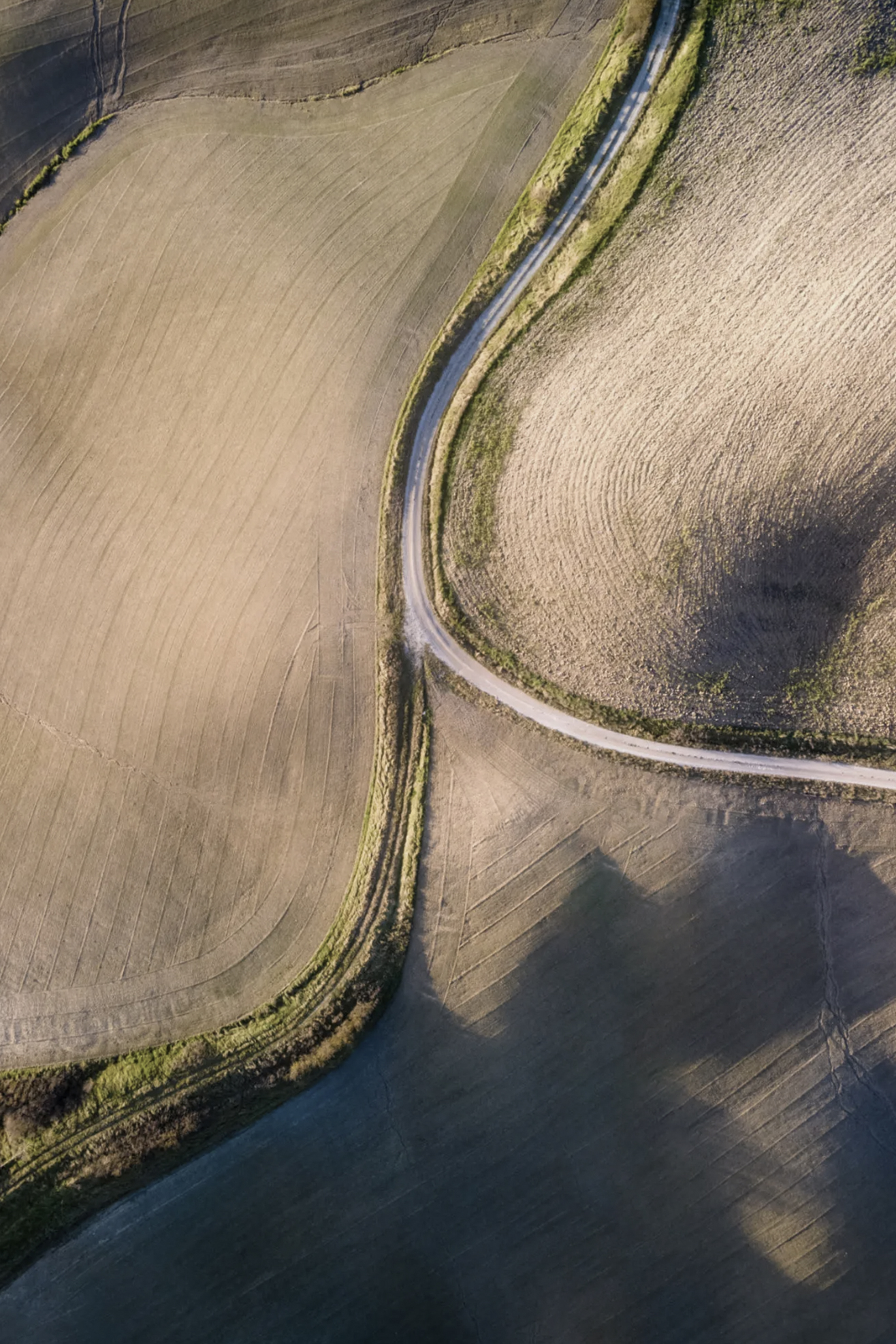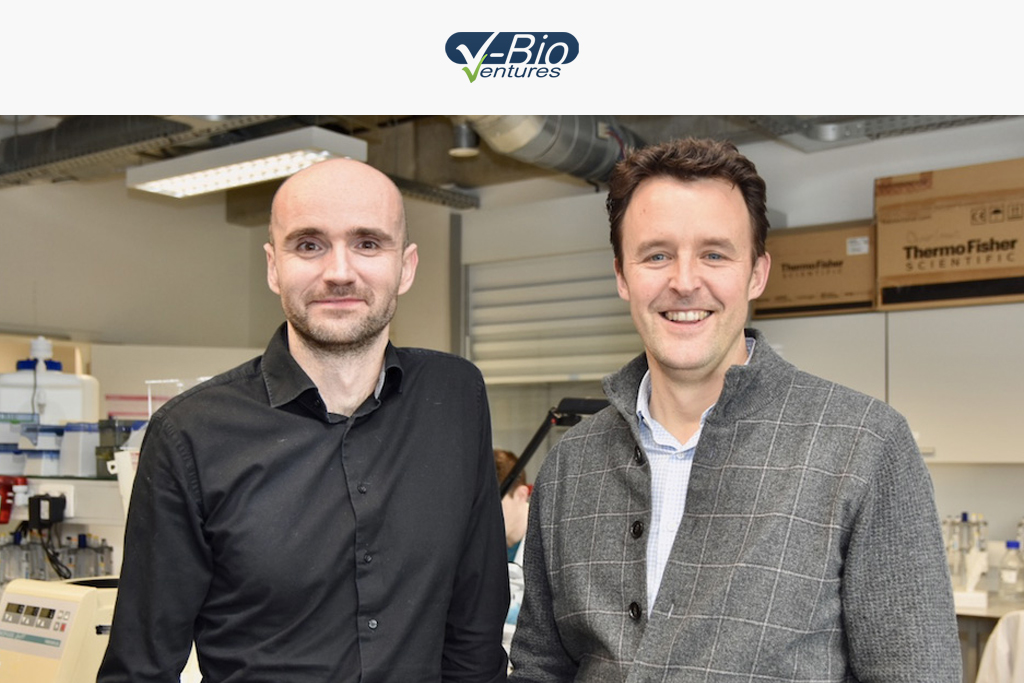

Augustine Therapeutics is one of VIB’s latest spinoffs, developing a first-in-class drug for Charcot-Marie-Tooth disease. The company recently announced a seed-funding […]
Augustine Therapeutics is one of VIB’s latest spinoffs, developing a first-in-class drug for Charcot-Marie-Tooth disease. The company recently announced a seed-funding round of €4.2 million, led by V-Bio Ventures. We spoke to several of the key persons in Augustine about how the startup is tackling the “Valley of Death”: the no-man’s-land between academia and industry where many potential therapies often fail.
By Amy LeBlanc
From academic theory to patient therapy
Augustine’s mission is to develop the first treatment for Charcot-Marie-Tooth disease (CMT). Although considered an orphan disease, CMT is nevertheless one of the world’s most common hereditary neurological disorders. It isn’t deadly, but severely affects a patient’s quality of life as the progressive degeneration of peripheral nerves results in a range of issues. Current treatment options are limited to supportive care, such as physiotherapy and pain killers.
The company was founded based on multiple breakthroughs in the labs of Ludo Van Den Bosch, Joris De Wit and Bart De Strooper (VIB – KU Leuven). Van Den Bosch has been studying neurodegenerative disorders, such as ALS and CMT, for decades. While trying to gain insights into the underlying genetic mutations and mechanisms of CMT, his lab identified a biological pathway that can potentially be targeted to treat the disease. Van Den Bosch told us:
“I was convinced from the beginning that this pathway represents an interesting therapeutic strategy, not only for CMT but also for ALS and other neurodegenerative diseases. But since we’ve discovered that it is clearly a driving factor for CMT, and as there are no other treatments available to patients suffering from this disease, we are aiming for that first.”
Having raised a seed-round of 4.2 million euro, Augustine is now working on identifying molecules that can target this specific pathway. Drug development presents a daunting task for such an early-stage startup, but things have been progressing rapidly with several leads already identified. This is because Augustine wasn’t founded in a typical manner: the company is being supported by VIB Discovery Sciences.
How to hit the ground running with drug development
Augustine is a very early-stage startup: the company is in the process of establishing a management team and, although it has a well validated target, it is working on the early stages of proprietary chemistry. A company this young would ordinarily have a hard time attracting the necessary capital and know-how to initiate drug development. So how has Augustine done it?
The aim of VIB Discovery Sciences is to bridge the Valley of Death, as they call it: the critical initial phase of a drug discovery, where it still teeters between academia and industry. – Jérôme Van Biervliet, VIB
The answer lies in the Flemish life sciences institute VIB’s extraordinary support for spin-offs. Jérôme Van Biervliet, head of VIB Discovery Sciences, explained:
“At VIB, we have a very active strategy of taking academic inventions by the hand towards startup creation. To conduct this process of valorization, we added another tool to the box in 2015: VIB Discovery Sciences. The aim of VIB Discovery Sciences is to bridge the Valley of Death, as they call it: the critical initial phase of a drug discovery, where it still teeters between academia and industry.
We have an operational, scientific team, led by people with experience in the biotech or pharma industry, who help to initiate the drug discovery process for targets that emerge from the research being conducted at VIB. Then we try to find investors and business partners for the company to set up seed funding or other investments.”

The Valley of Death, where less resources are invested by both academia and industry, is a phase where a lot of startups fail.
“In this industry,” Van Biervliet continued, “there is still significant risk involved in early-stage projects. We see it as our task to de-risk as much as possible; both financially, by co-investing, but also by supporting the company’s initial activities. This allows investors to take on projects which might otherwise have been too early in development for them.
Because we work in close collaboration with our academic founders, who have been working on these targets for many years and know their field well, it makes for a win/win situation: we can get the critical activities for the drug discovery organized in a professional and industry-like manner, yet retain the creativity and insights from the academic labs.
This has been exactly the case for Augustine Therapeutics: with the Discovery Sciences team, we started the drug discovery process in 2018 and were quickly able to attract the interest of V-Bio Ventures and other investors.”
The next step of the journey
With its seed fund secure and chemistry underway, Augustine is set to “graduate” from VIB Discovery Sciences later this year. Currently, the operational tasks that would normally be undertaken by the CSO and COO are being managed by the VIB Discovery Sciences team. V-Bio Ventures also has a role to play, looking after the work typically assigned to the CEO and CFO. Augustine is now building towards internalizing these skills and building a solid management team.
Augustine Therapeutics is a good example of the interplay between VIB, V-Bio and other investors in the space. A couple of years ago, this was way too early to even think about founding a company… Now, instead, we are able to move the project along into that translational space. – Ward Capoen, V-Bio Ventures
It may seem like an odd set-up, but Ward Capoen, Principal at V-Bio Ventures, says it’s not unheard of:
“As investors, we’re starting to see this happening more and more, where you have this start-up incubation period supported by initiatives like VIB Discovery Sciences. In the US, you have Flagship Ventures, Y Combinator and Atlas Venture, all doing a similar thing.
Augustine Therapeutics is a good example of the interplay between VIB, V-Bio and other investors in the space. A couple of years ago, this was way too early to even think about founding a company. Projects like this would maybe have been licensed out to pharma or they may have just bumped around in the academic lab for a while.
Now, instead, we are able to move the project along into that translational space, where we can create a new therapy for patients who are currently without any treatment options.”
Header image: Ward Capoen (left) and Jérôme Van Biervliet (right) (courtesy of V-Bio Ventures).
